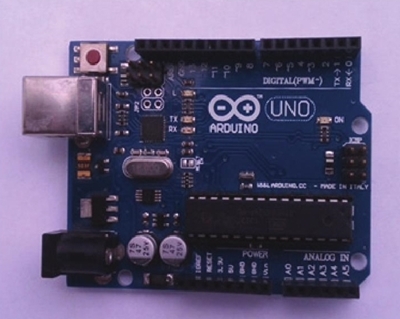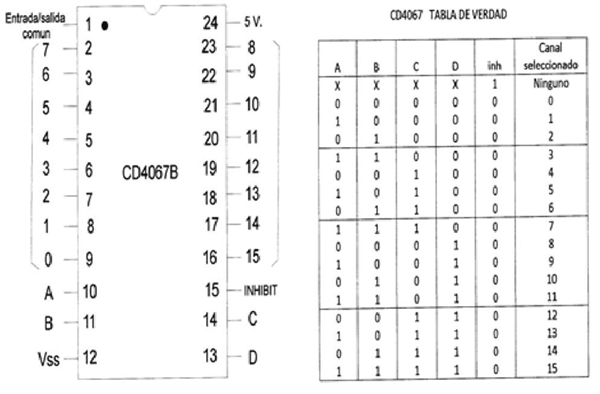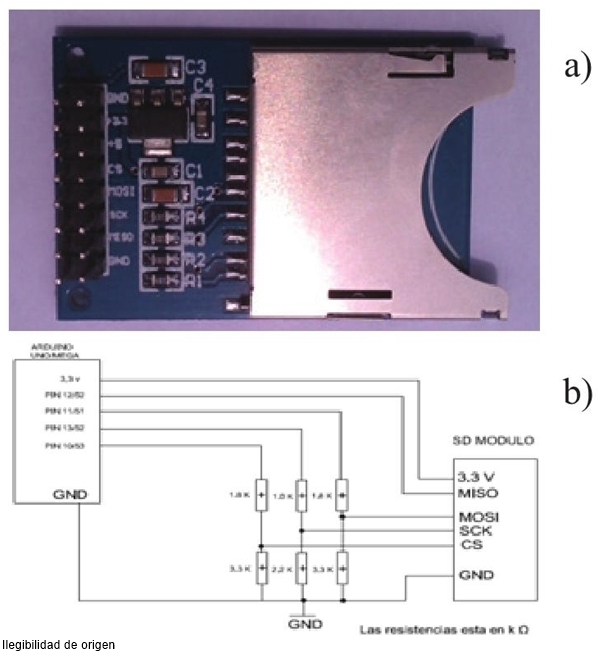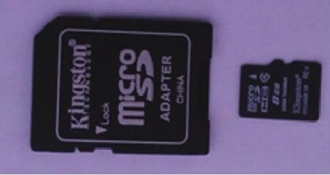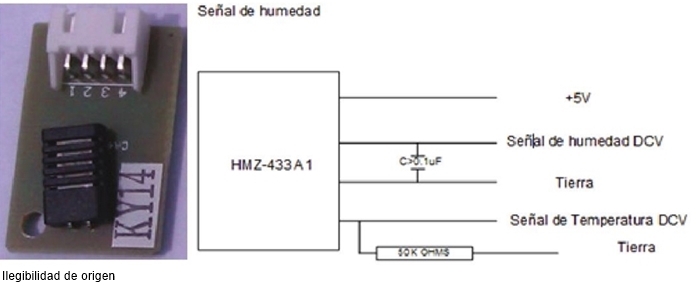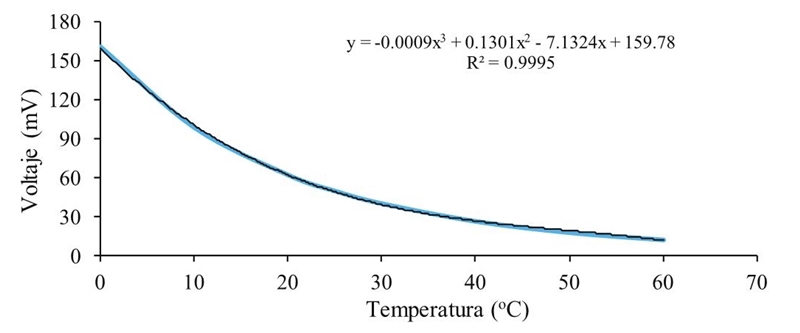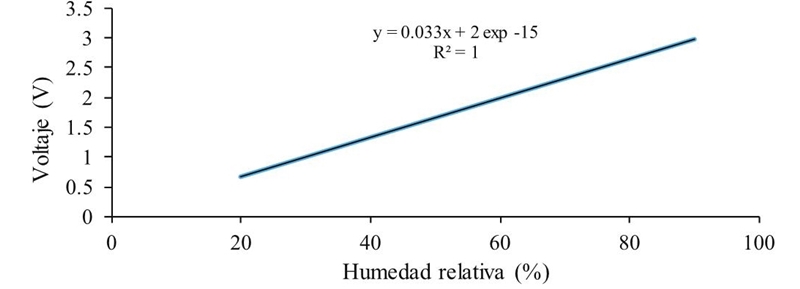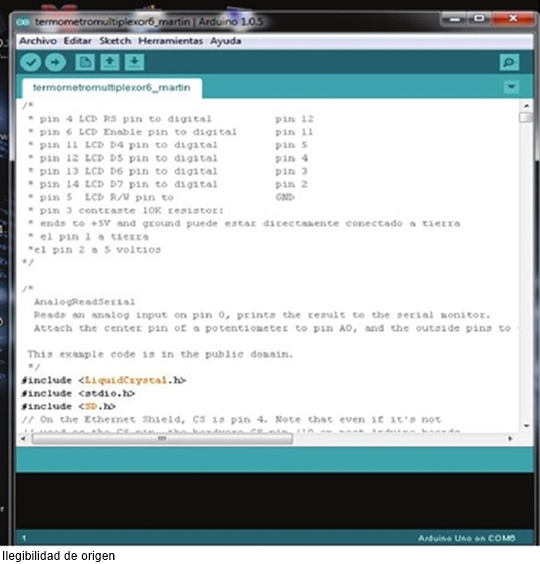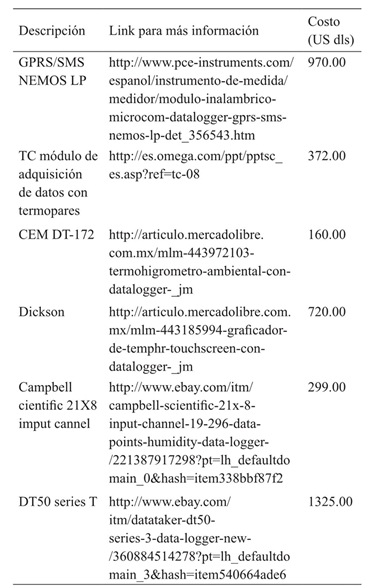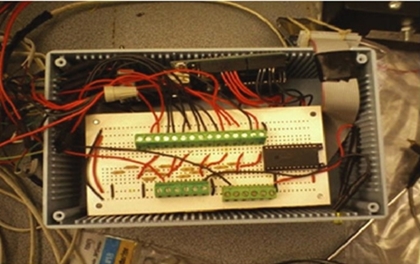Serviços Personalizados
Journal
Artigo
Indicadores
-
 Citado por SciELO
Citado por SciELO -
 Acessos
Acessos
Links relacionados
-
 Similares em
SciELO
Similares em
SciELO
Compartilhar
Revista mexicana de ciencias agrícolas
versão impressa ISSN 2007-0934
Rev. Mex. Cienc. Agríc vol.8 no.1 Texcoco Jan./Fev. 2017
https://doi.org/10.29312/remexca.v8i1.67
Articles
Low cost data acquisition system with the arduino platform
1Ingeniería Agrícola, Uso integral del Agua y Departamento de irrigación. Universidad Autónoma Chapingo. Carretera México-Texcoco, km 38.5. Chapingo, Estado de México, México. CP. 56227.
Although the advances in electronics are immense and the market is saturated with instruments and sensors that allow to take and store data these are usually not economic and there is still a need to have devices that collect and store information at low cost, which may be accessible to producers, researchers or students with low budget which is very common in our country; hence the need to tell or have a way to build a data acquisition system (SAD) in this paper mentions the necessary parts as well as the elements that are required to build an economic and reliable SAD based on the Arduino platform.
Keywords: relative humidity; sensors and multiplexer; storage memories; temperature
Aun cuando los avances en electrónica son inmensos y el mercado está saturado de instrumentos y sensores que permiten tomar y almacenar datos estos no suelen ser nada económicos y sigue existiendo la necesidad de disponer de aparatos que recopilen y almacenen información a bajo costo, que puedan ser accesibles a productores, investigadores o estudiantes con bajo presupuesto lo cual suele ser muy común en nuestro país; de allí que surja la necesidad de contar o tener la manera de construir un sistema de adquisición de datos (SAD) en este trabajo se menciona las partes necesarias así como los elementos que se requieren para construir un SAD económico y confiable basado en la plataforma Arduino.
Palabras clave: humedad relativa; memorias de almacenamiento; sensores y multiplexor; temperatura
Introduction
Humans get information from the environment that surrounds them through their senses, electronic systems acquire information using sensors, today they are present in all human activities, in systems for the industrial control of processes, automobiles, airplanes, medical devices, household appliances, etc. and have become an essential part of the welfare of our lives (Reverter and Areny, 2005), in the case of agriculture the situation is not different and they arrived to stay; Abdullah and Barnawi (2012) mention that sensor networks are among the 10 emerging technologies that will change the world for good. The development by the electronics industry of microcontrollers, a wide range of devices useful for census of the variables of interest, external data storage devices SD (security digital), liquid crystal displays and multiplexers that allow to use a Same analog input of the micro controller to simultaneously census several analog variables, naturally creates the need to have a data acquisition system without having to use a notebook or personal computer and the devices that store and store the data of analog signals commonly called data recorders (dataloggers) (Saha et al., 2006; Vázquez et al., 2014).
Although today the trend is towards the use of wireless sensors and devices (Postolache et al., 2012). They certainly offer some advantages in certain conditions, there will always be situations where it is more convenient to use traditional and low cost sensors. Especially when you want to census surfaces or small environments such as greenhouses or small plots that with a little planning the wiring does not have to be a complicated situation, in addition to not having significant losses of voltage. The acquisition of data is defined as the process of taking reality information through a signal as input, can be current or voltage, for further processing and analysis, storage or other manipulation (Chase et al., 2012; Sharma et al., 2012; Singh and Sharma, 2012).
Junior (2012) carried out an evaluation in which he compares the arduino micro controller in the measurement of analogue signals comparing it to the outputs of an analog ohmmeter (voltmeter) it concludes that it can be relied upon to carry out analogue measurements in the ground in terms of electrical conductivity. The scientific community has shown interest in generating data acquisition systems that are economical, easy to build, reliable, such as those constructed by Fisher and Kebede (2010); Rahmat et al. (2012) that were implemented in compliance with the above criteria.
The applications of the sensors are diverse such as the automation of drip irrigation based on soil moisture sensors (Ventura et al., 2010; Dursun y Ozden, 2011), to monitor greenhouses in real time to control the luminosity, heat, ventilation, irrigation, and so on (Kasaei et al., 2011), solar radiation measurement (Righini et al., 2010), etc. Di Justo and Gertz (2013) show how to construct different electronic devices to measure atmospheric variables using the UNO arduino platform.
The measurement of temperature and relative humidity (HR) of air are essential components of many weather programs (Whiteman et al., 2000; Zagade and Kawitkar, 2012; Borate and Patil, 2013). For this reason, this paper proposes a low cost data acquisition system with the arduino platform, which is easy to implement and can be used to measure temperature and HR.
Materials and methods
The device developed is based on the arduino UNO platform and the sensors used that are of temperature and relative humidity are included in the commercial device HMZ-433 A1; also, an SD card reader Arduino module and an SD memory of 8 GB of memory where the data is recorded. In addition, a pair of phenolic plates and 4-wire telephone cables were used, as well as the necessary components of the power source that powers the system.
Characteristics of the arduino UNO board. The arduino UNO board is a device that can be bought already built, there are factories (SmartProjects in Italy) that produce them with a standardized quality thus eliminating the sources of error and are available in the stores Steren and AGelectrónica among others. It can also be built by anyone interested in it (Tzaputzas, 2014). The basic elements that make up the arduino UNO board, as well as its main features, if purchased from the factory are: an atmega 328 micro controller, it works with a voltage of operation of 5 volts, a voltage regulator integrated by what can be fed externally with a power source operating in a range of 6 to 20 volts although it is recommended not to leave the limits of 7 to 12 volts and a current consumption of 40 mA; has six analog and 14 digital inputs, 32 KB memory capacity to host the program that will be executed once recorded, 0.5 are used by the program called bootloader and it works with a clock frequency of 16 MHZ, an EEPROM memory of 1 KB among other characteristics.
The arduino is actually three things: a board (free hardware), a software and a free programming language that was born in 2005 at the Interactive Design Institute Ivrea (Italy), the author recommends specifying the type of Arduino at which is being referenced since there are different official arduino boards, each of them with particular characteristics and performance (Torrente, 2013). In this document when speaking of arduino it is the same Arduino ONE that is shown in Figure 1.
The analog multiplexer is powered by 5 volts and is the electronic device that allows to select several analog inputs to a single channel with selection pins having low impedance and low consumption and an internal direction of decoding, in addition the resistance when in operation is relatively constant over the entire input range, the multiplexer used is the CD4067B with 16 channels that are selected using four digital control inputs whose combination of inputs will be according to the table shown in Figure 2 and will be the one that defines the channel to use. The connection diagram of the multiplexer is shown in the same figure. If additional information is required, the manufacturer’s data sheet can be consulted.
With a device of this kind can handle 16 different analog inputs and outputs to a single analog input of the micro controller, which is one of the fundamental parts of this work. To indicate the channel to be read it is necessary to use 4 digital pins of the microcontroller whose outputs will connect to the inputs A, B, C, D of the multiplexer. This same digital signal can be used to add a second and a third multiplexer whose common outputs are connected to different analog inputs of the microcontroller.
SD arduino Reader Module. This device is available in the market at a cost of approximately $50.00 and the main function is to interface between the Arduino board and SD memory, shown in Figure 3a, the connection diagram between the SD Reader Module and The arduino plate is shown in Figure 3b.
This SD reader module can accommodate an SD memory with 2, 4, 8, 16 or 32 GB capacity, it is a suitable amount of memory for most projects, since the recording format is in text, later it is passed to Numerical format with a spreadsheet either commercial (Excel) or public domain as is open office.
Memory consumption is low, as an example you have that 1 000 data in text format of four significant figures consumes about 6 KB of memory, considering that you are going to census 16 data per second when using a memory of 8 GB can store data for 1000 days, which makes it very efficient and indicates that 8 GB is a good amount of memory. This memory has a non-volatile format widely used in portable devices (Figure 4).
The HMZ-433Al device contains the temperature and relative humidity sensors (Figure 5a) and the way it is connected to the arduino UNO (Figure 5b).
In the Figure 6 shows the response of the sensor to the temperature, which is provided by the manufacturer, and it is noted that it is not linear so it is necessary to have an adjustment model and for this a system of an equation is solved with three unknowns to find the coefficients, which will be used in the programming code (Trastejant, online).
The power source required for the power supply of this device can be purchased or constructed and must supply a voltage of 9 volts and current of 1 ampere, the construction of the power sources and the assembly of the circuits should not be difficult if the basic rule is that drivers should be as short as possible (Kilgenstein, 1996). Also, the basic materials of an electronic laboratory are used, among which are the multimeters, soldering station, clamps, and screwdrivers, among other materials. In the Figure 7 shows the sensor response to relative humidity, which is provided by the manufacturer and is linear.
It was first constructed on a protoboard tablet according to the diagram shown in Figure 8. The diagram shows the diagram of a single HMZ-433 A1 containing the temperature and relative humidity sensors connected to the channels 0 and 1 of the CD4067 multiplexer, in the same way the remaining sensors can be connected until the 16 available channels of the multiplexer are exhausted.
Development of the program
For programming the arduino, it is necessary to use a computer, it does not require high performance and the necessary software or computer programs are available on the network for free (https://www.arduino.cc/en/main/software) (Figure 9).
The arduino programming language is based on C/C++ as indicated in the official site and has a large number of libraries that are freely accessible and make the programming task a lot easier. The device was programmed to count the variables every hour and to keep the sensors without power when the measurement is not carried out, and by means of an instruction they are energized half a minute before beginning the taking of readings and they turn off immediately after, the plate arduino UNO is maintained Energized all the time, it is adapted a rechargeable battery of 12 volts so that in case of failure the electric power supply of the network do not stop census and there is no loss of information.
It is necessary to assign four digital outputs of the arduino UNO to be able to indicate to the multiplexer which input channel of the 16 available will be directed to the output channel that will be introduced to the analog input of the arduino UNO board. Four other digital outputs are used for the data connection and storage protocol in SD memory. The file that is created in case it does not exist is named datalog.txt and where the data that is previously converted to a string of characters is recorded by the program recorded in the arduino.
Results and discussion
It was verified that the prototype even in protoboard worked adequately in a period of 24 h, was placed inside a meteorological stand with the 14 sensors two for each HMZ-433 A1 (Figure 10) and later the data was downloaded from the memory To a computer. After opening the datalog.txt file with the temperature and relative humidity data recorded and putting the header in the spreadsheet, they remain as shown in Figure 11. The information presented was recorded in the weather station of the Autonomous University Chapingo on February 24, 2014.
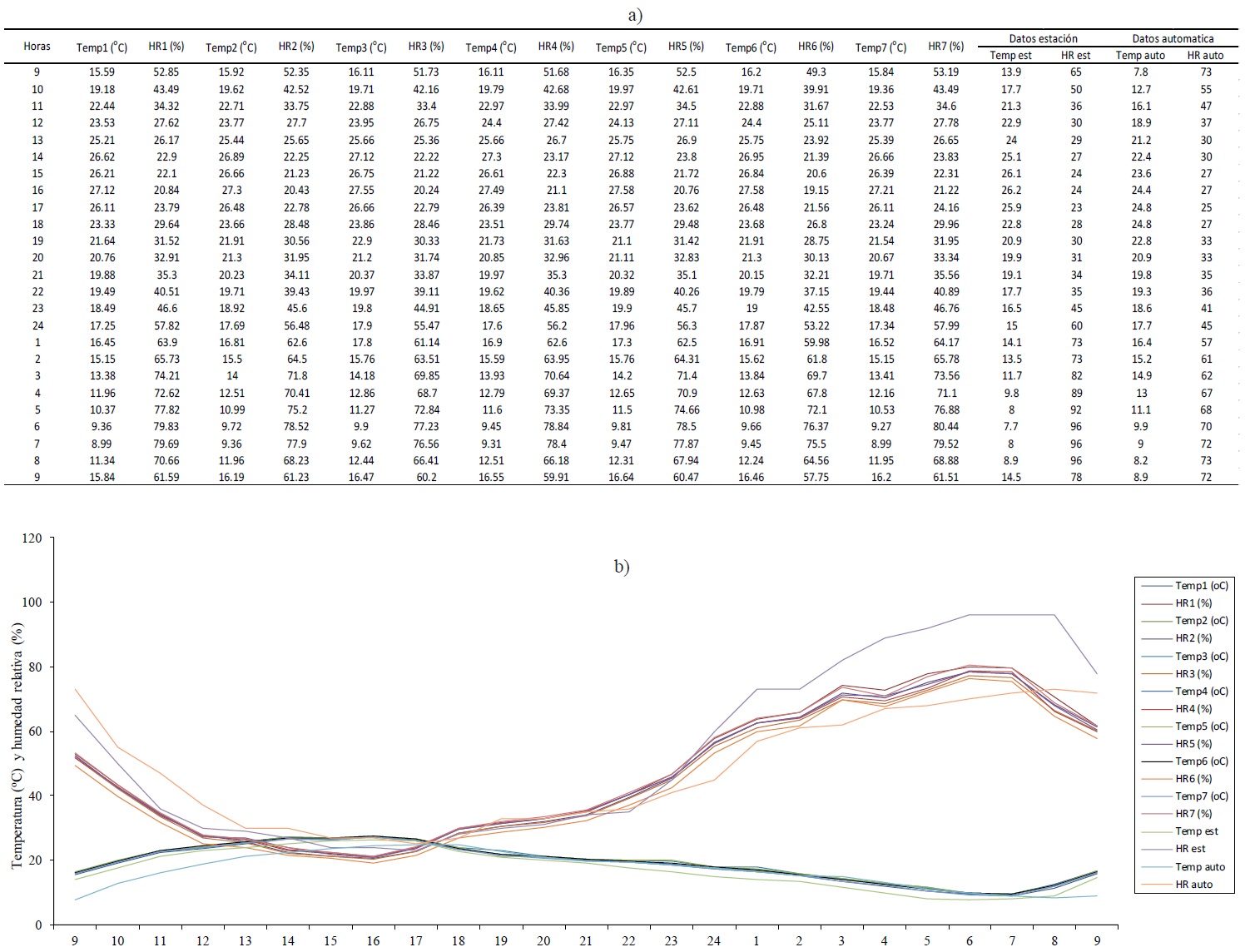
Figure 11 Data obtained with the seven sensors in operation and data measured at Chapingo (a) and generated graphical station (b).
In the Figure 11a shows the temperature and relative humidity data obtained: with the HMZ-433A1 sensors, in an automatic station and in a conventional.
Meteorological station, the behavior of the different sensors, which is generally uniform , are the data of the automatic station and those reported by the personnel of the meteorological station, those that present greater variation, which can be due to diverse factors like lack of maintenance of the instrument, human error in making the observations or the lack of calibration of the sensors used which is beyond the scope of this work (Figure 11 b).
The objective of this test is to show the effectiveness of the SAD as a tool to censor temperature and relative humidity and in general to see its capacity to read and store data, as well as allowing a very simple way to transfer the information to the personal computer.
The built-in data acquisition system can be reprogrammed to census the variables of interest at the required frequency and the data is stored in an 8 GB of SD memory which can be replaced by a larger capacity memory, and the costs are presented in Table 1.
In commercial SADs sometimes reprogramming of measurement frequency or maintenance is often complicated and requires specialized personnel. The one proposed in this work consists of fewer parts, is very easy to build and supported by the resources freely shared by the arduino community, its reprogramming is very easy (Torrente, 2013). It achieved a balance between construction, programming, memory, functionality and cost, which makes it very versatile. Fisher and Kebede (2010) propose a low-cost data acquisition system to monitor crop temperature and humidity, list the components and costs required to implement it in Table 2. The total cost of this device is $84.10. One of the weaknesses of this system is its storage capacity limited to the memory it uses.
The cost of the essential parts for the construction of the SAD is broken down in Table 1 and give a total of $57.32, lower cost than that presented in table 2 that corresponds to the Fisher and Kebede (2010) proposal, and is more economical than any of the commercial dataloggers that present similar or lower performance. A list of different data acquisition systems that can be purchased from online stores such as http://www.ebay.com and http://www.mercadolibre.com is available, where used and new items can be purchased (Table 3). It can be seen that costs are high when compared to the total cost of the proposed SAD components in Table 1.
In the Figure 12 presents the physical aspect of the built SAD and shows the simplicity achieved.
Conclusions
It is possible to build a low-cost SAD based on the Arduino platform, with basic programming and electronics knowledge using the different devices that are available in the market at affordable prices. The inclusion of the analog multiplexer gives the system the ability to census up to 16 analog variables such as temperature and relative humidity although other variables can be considered when counting on sensors for measurement.
Using the Arduino platform makes it a very versatile, simple and reliable SAD, since it can be reprogrammed easily to census variables of diverse interest and can be implemented quickly. Data loss in network power interruptions is avoided by adapting a 9-volt rechargeable battery as a secondary power supply.
This device can be used with advantages in research works or in small crop extensions where the need to monitor variables of interest is also possible as an alternative of measurement in greenhouses or micro tunnels. The system developed was inexpensive because when compared to another developed by another researcher turned out to be cheaper. And with similar systems that exist in the market presents the same characteristic.
Literatura citada
Abdullah, A. and Barnawi, A. 2012. Identification of the type of agriculture suited for application of wireless sensor networks. Rus. J. Agric. Socio. Econ. Sci. 12(2):19-36. [ Links ]
Borate, U. G. and Patil, R. T. 2013. Wireless real time proportional control system. Inter. J. of Comm. 1(2):15-20. [ Links ]
Chase, A. O.; Sampaio, M. H. K.; Almeida, J. F. and Brito, de S. J. R. 2012. Data acquisition system: an approach to the amazonian environment. Latin America Transactions, IEEE. Rev. IEEE Ame. Lat. 10(2):1616-1621. [ Links ]
Dursun, M. and Ozden, S. 2011. A wireless application of drip irrigation automation supported by soil moisture sensors. Sci. Res. Essays. 6(7):1573-1582. [ Links ]
Di, J. P. and Gertz, E. 2013. Athmospheric monitoring with arduino. Maker Press. Primera edición. USA. 150 p. [ Links ]
Fisher, D. K. and Kebede, H. 2010. A low-cost microcontroller-based system to monitor crop temperature and water status. Elsevier B.V. Computers and electronics in agricultura. 74:168-173. [ Links ]
Junior, M. M.; Nunes, R. O. and Celinski, V. G. 2012. Evaluation of the use of a microcontroller measures the platform Arduino sensor data in electrical conductivity of solo. Brasil. Rev. Eng. Tecnol. 4:52-57. [ Links ]
Kasaei, S. H.; Kasaei, S. M. and Kasaei, S. A. 2011. Design and development a control and monitoring system for greenhouse conditions based-on multi agent system. Broad Res. Art. Intel. Neur. (BRAIN). 2(4):28-35. [ Links ]
Kilgestain, O. 1996. Fuentes de alimentación electrónica. Circuitos prácticos de electrónica. Ediciones CEAC. España. 120 p. [ Links ]
Postolache, O.; Pereira, J. D. and Girão, P. M. 2012. Greenhouses microclimate real-time monitoring based on a wireless sensor network and gis. Republic of korea. In: XX IMEKO world congress Methodology for Green Growth. 1:1-5. [ Links ]
Rahmat, M.; Azis, M.; Rustami, E.; Maulina, W.; Seminar, K. B.; Yuwono, A. S. and Alatas, H. 2012. Low cost configuration of data acquisition system for wireless sensor network. Indonesia. International J. Eng. Technol. 12(02):23-32. [ Links ]
Reverter, F. and Pallas, A. R. 2005. Direct sensor-to-microcontroller interface circuit design and characterisation. Spain. 135 p. [ Links ]
Righini, R.; Roldán, A.; Grossi, G. H.; Aristegui, R. y Raichijk, C. 2010. Nueva red de estaciones de medición de la radiación solar. In: Comunicaciones del XXXIII Congreso de ASADES. 11:1-5. [ Links ]
Saha, S.; Islam, M. T. and Hossain, M. Z. 2006. Design of a low cost multi channel data logger. ARPN. J. Eng. Appl. Sci. 1(1):26-32. [ Links ]
Sharma, K.; Shrimali, H.; Sing, H. J. and Chattri, A. 2012. Data acquisition and supervisory control system for environmental parameters in greenhouses. Inter. J. Eng. Trends Technol. 31(5):595-600. [ Links ]
Singh, N. M. and Sharma, K. C. 2012. Design of PIC12F675 microcontroller based data acquisition system for slowly varying signals. India. arXiv preprint arXiv:1207.2060. [ Links ]
Torrente, A. O. 2013. Arduino. Curso práctico de formación. Alfaomega. Primera Edición Rustica. Madrid, España. 588 p. [ Links ]
Vázquez, R.; Robledo, A.; Toledo, P.; Mason, L.; Mariguetti, J. y Canali, L. 2014. Desarrollo de un procedimiento para construir un datalogger de bajo presupuesto utilizando un dispositivo genérico. In: II Jornada de Investigación en Ingeniería del NEA y países limítrofes. Argentina. 543 p. [ Links ]
Ventura, F.; Facini, O.; Piana, S. and Rossi, P. P. 2010. Soil moisture measurements: comparison of instrumentation performances. Journal of irrigation and drainage engineering. E-Asce. 136(2)81-89. [ Links ]
Whiteman, C. D.; Hubbe, J. M. and Shawe, W. J. 2000. Evaluation of an inexpensive temperature data logger for meteorological applications. Am. Meteorol. Soc. 17:77-81. [ Links ]
Zagade, S. U. and Kawitkar, R. S. 2012. Advanced greenhouse using hybrid wireless technologies. India. Inter. J. Adv. Res. Computer Sci. Electr. Eng. 1(4):31-34. [ Links ]
Received: December 2016; Accepted: February 2017











 texto em
texto em 

